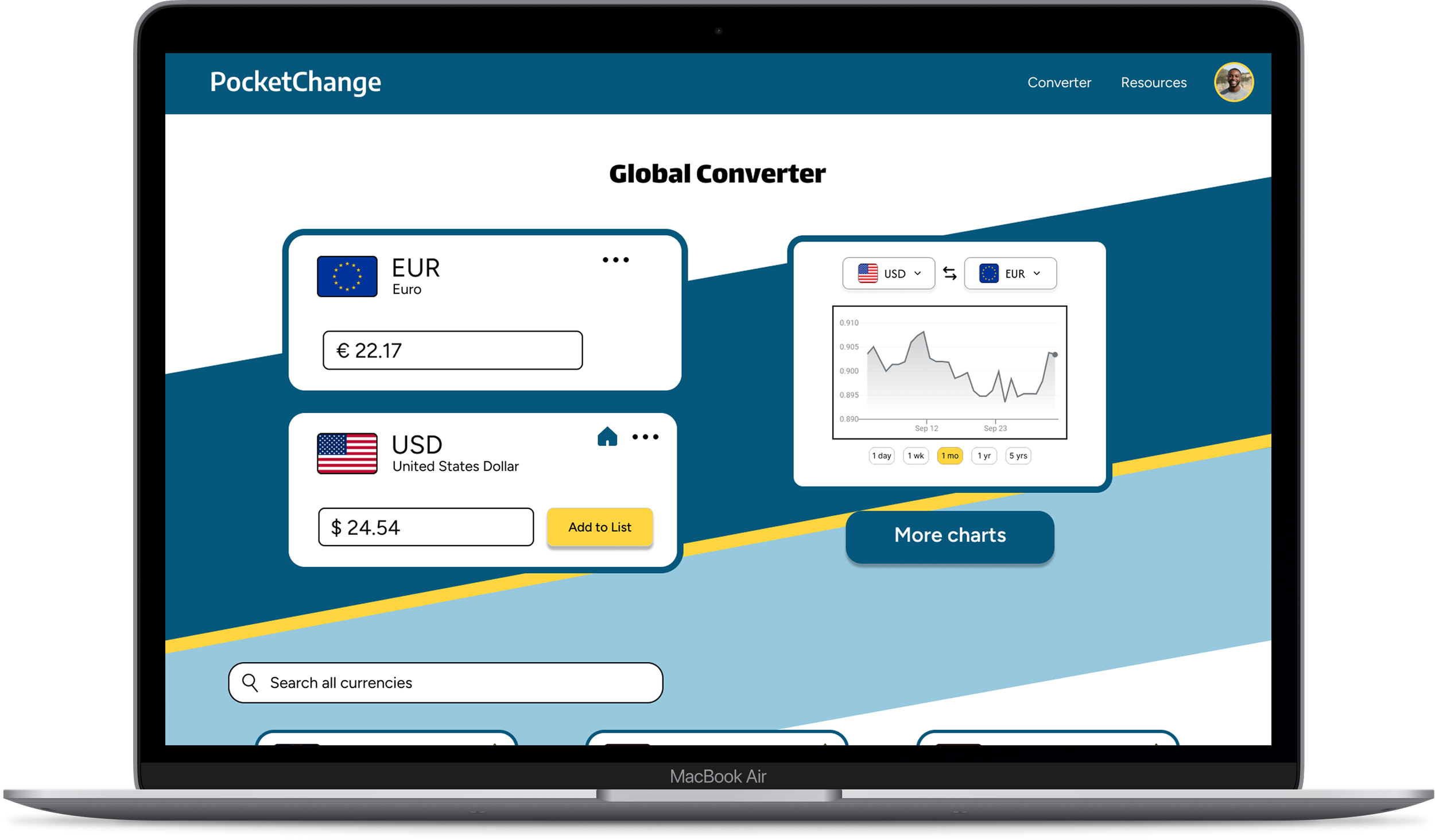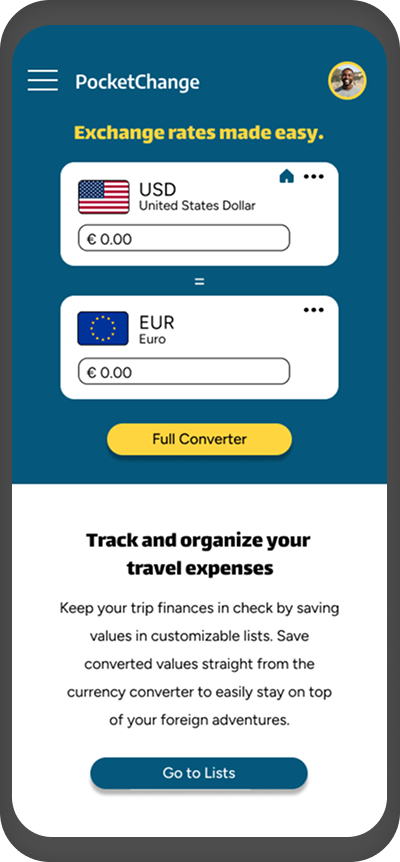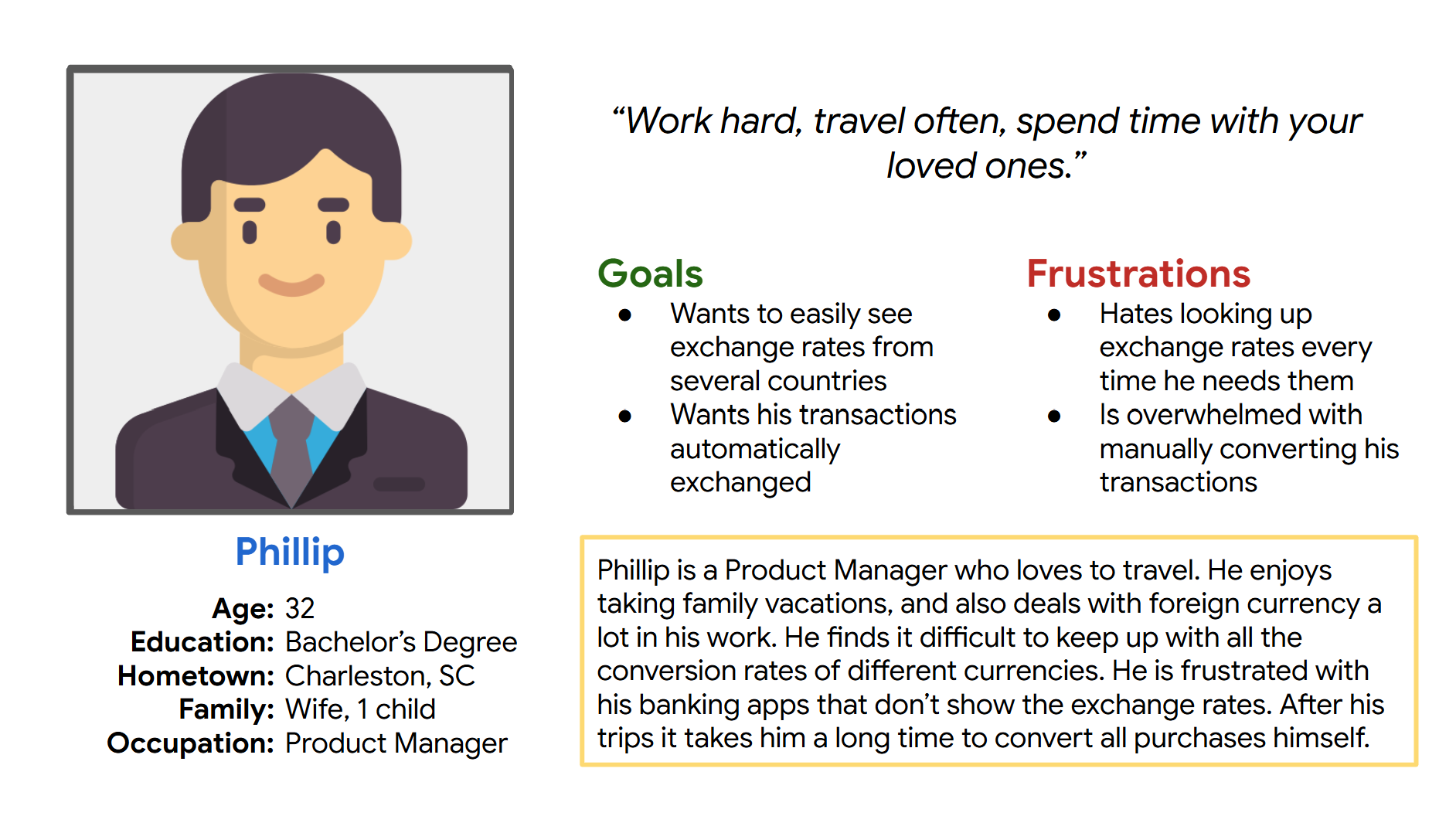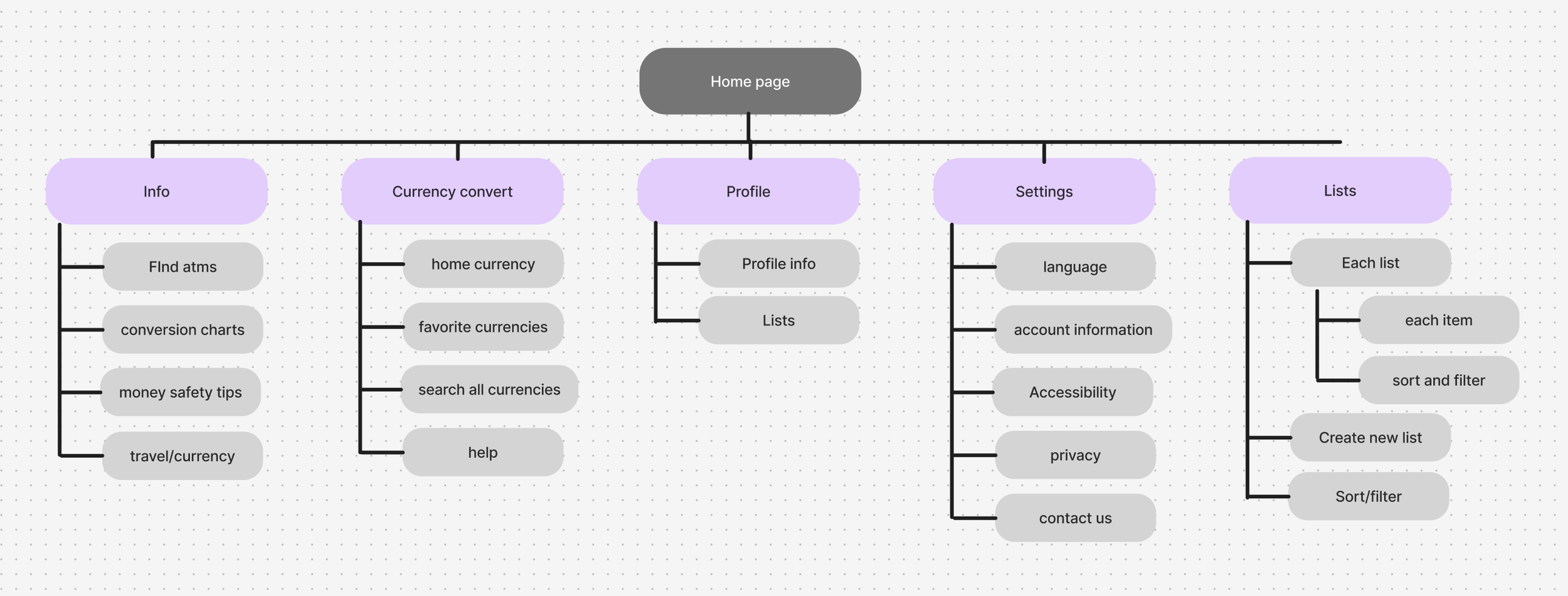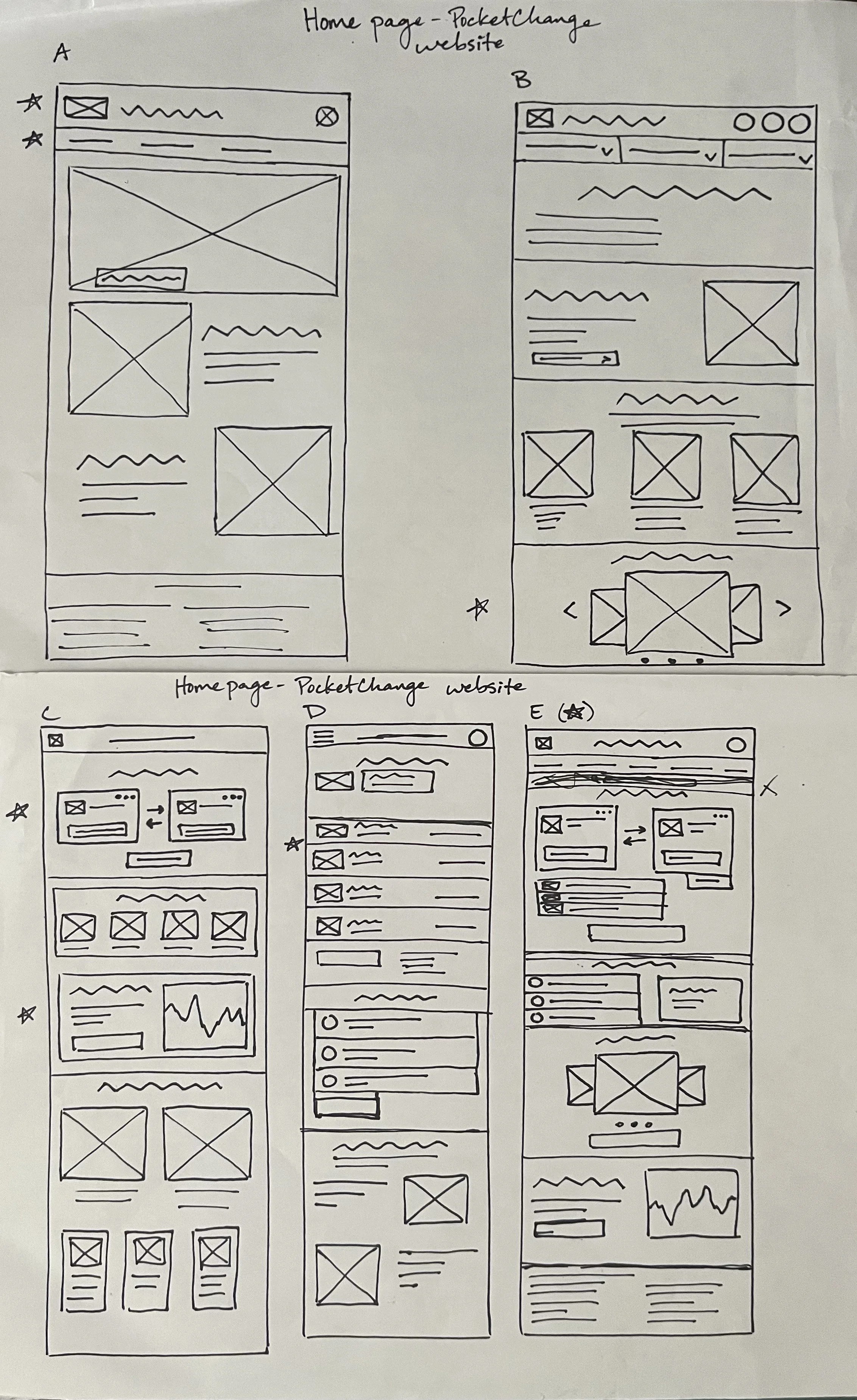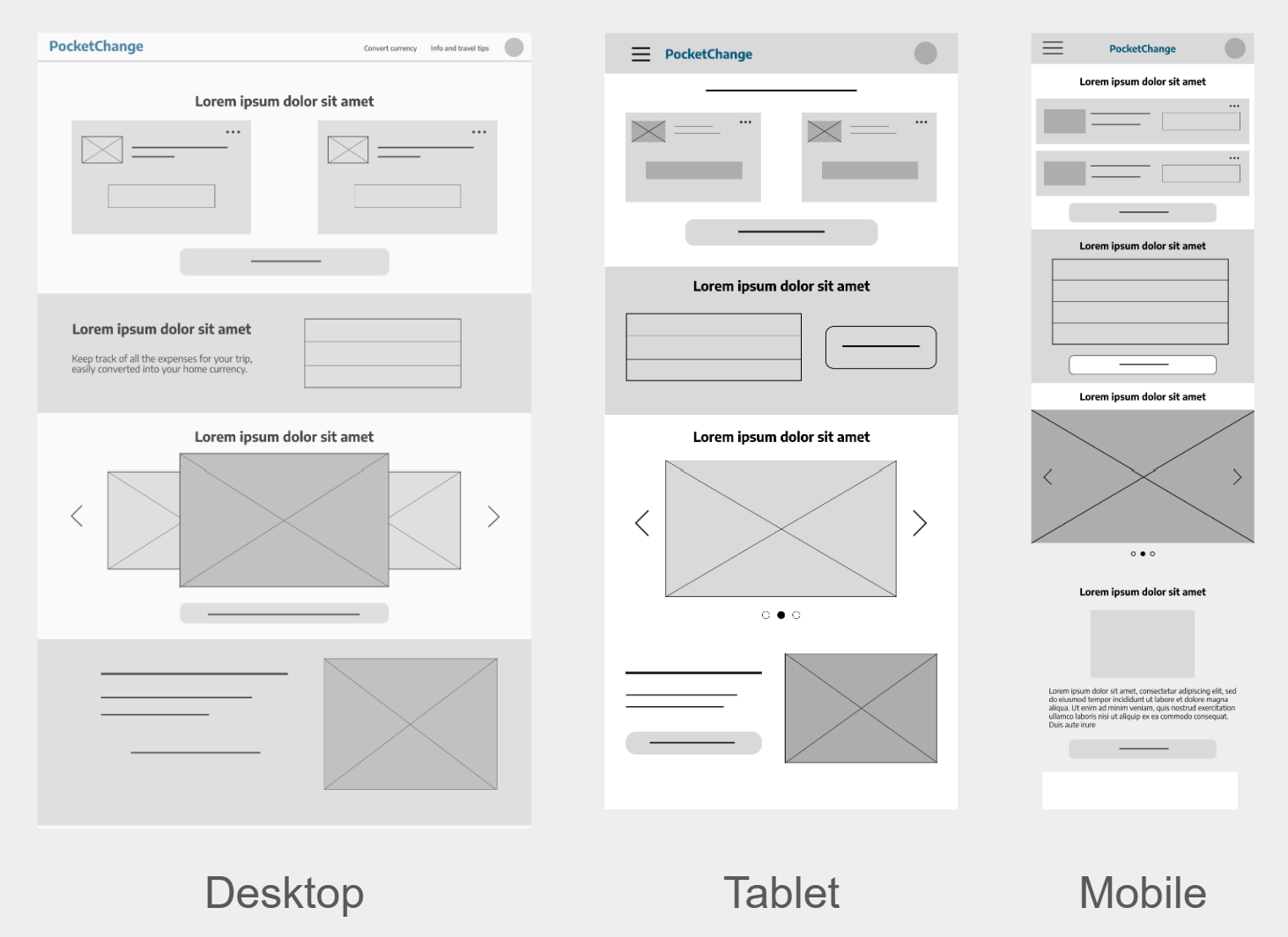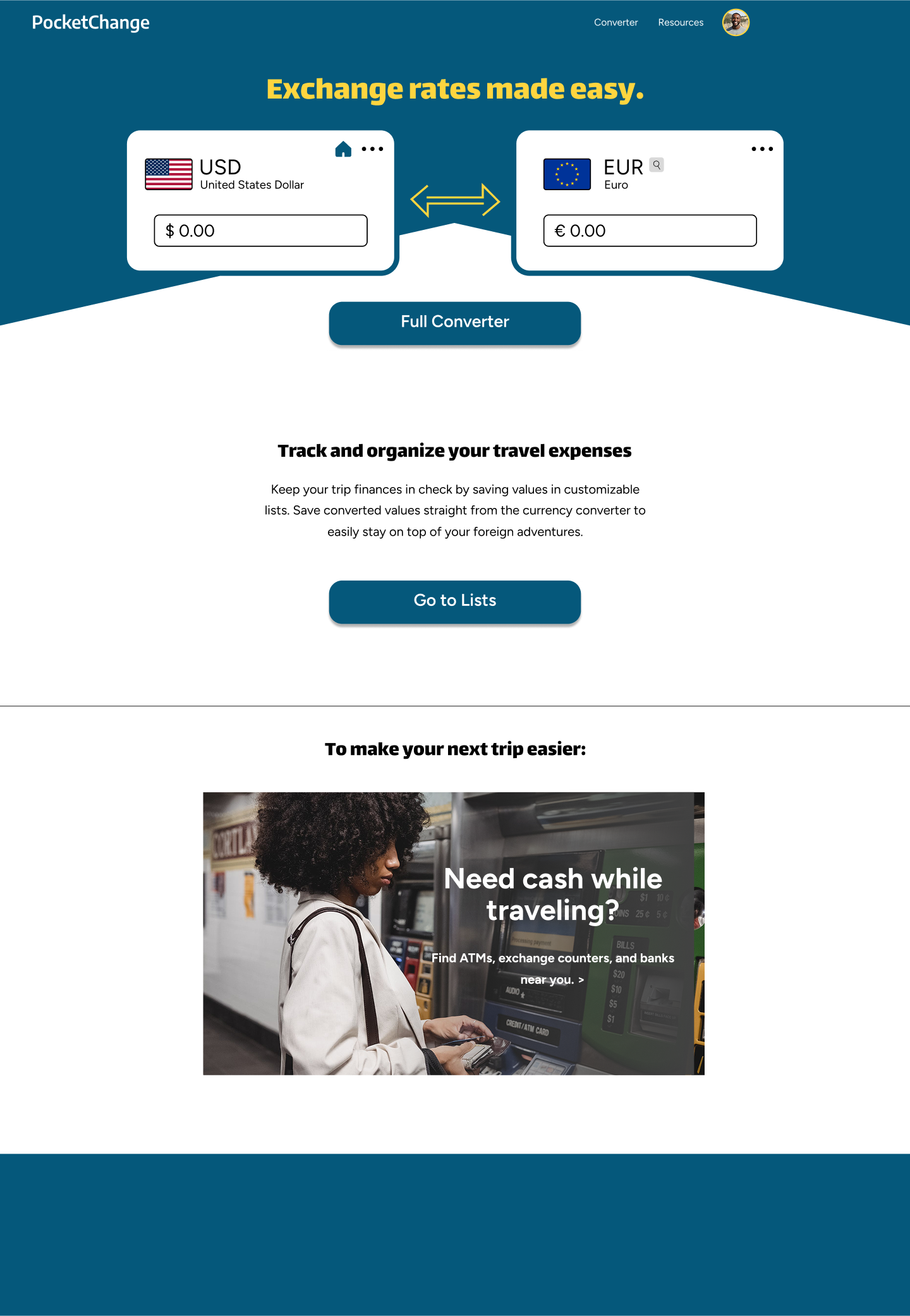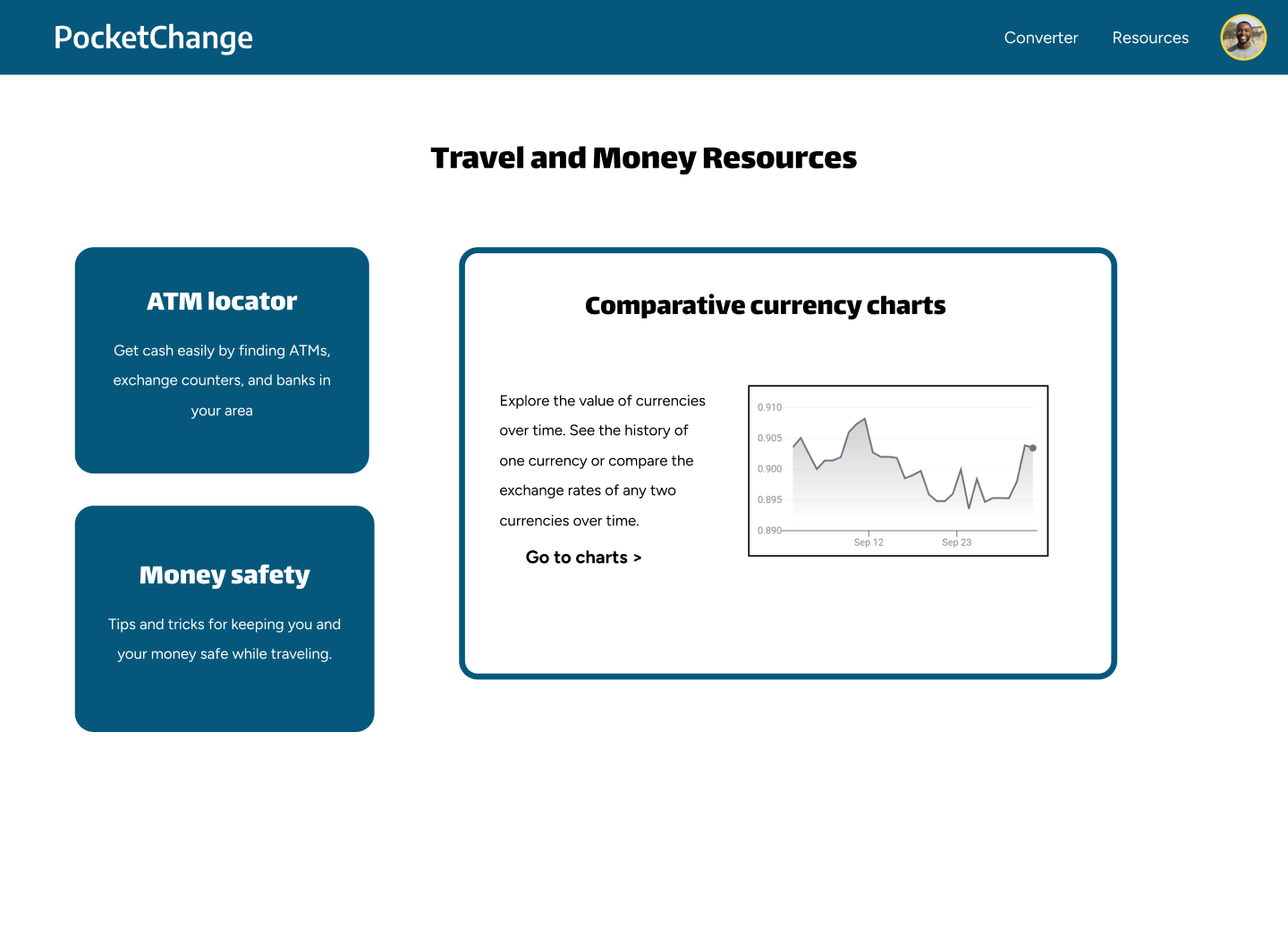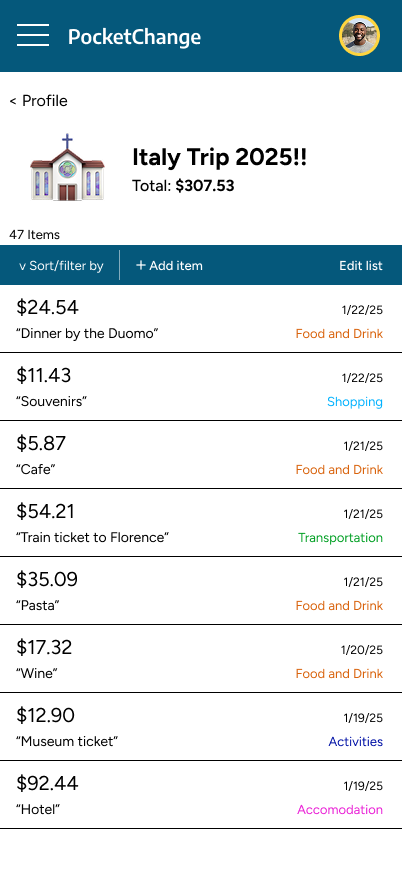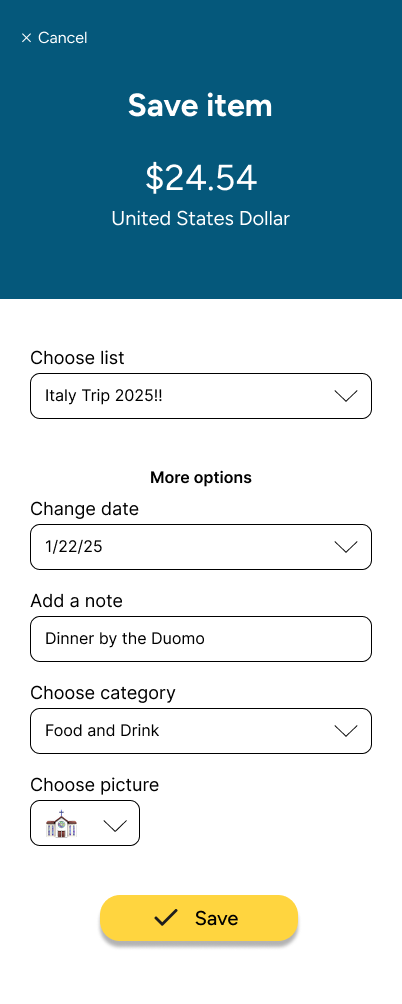PocketChange: The Website
Exchange rates made easy.
Overview
As my second portfolio project for the Google UX Design course, I turned my mobile app for PocketChange into a responsive website.
Problem Statement
International travelers need a simple and reliable way to understand currency conversions and keep track of their expenses across different trips.
The Goal
From the app I created, create a responsive website counterpart that helps travelers easily convert currencies and track their expenses in personalized lists.
Roles
Everything (personal project): UX researcher, UX writer, information architect, UX designer, project manager, etc.
Timeline
January 2025 - February 2025
Research
Note: I conducted the same research for the app and website versions of this product. If you’d like to see how the end results differ, check out my case study for the PocketChange app!
After consideration of the target audience, 3 user personas were created to represent different characteristics of several target users. These people have interaction with foreign currencies and need a quick and easy way to access transaction rates. It was helpful to develop these user personas and keep them in mind while making progress on this project.
User Personas
Pain Points
1
Many tabs open
Users are tired of making a new search when they need a conversion rate or looking through their existing tabs for a past conversion rate search.
2
Time-consuming
When users have many currency amounts to convert, it gets cumbersome and time-consuming to do them one by one.
3
Confusing
Conversion rates can be hard to understand at first, and most preliminary searches do not explain all the necessary information.
4
Hard to remember
Users are frustrated with trying to remember conversion rates off the top of their head, especially when dealing with several currencies or when rates change.
Competitive Audit
I compared 47 unique features across 9 different websites and apps that could be considered competitors of PocketChange. Here are some of the results:
44%
showed the corresponding symbols for each currency. I would like to include these for ease of use and understanding.
22%
had the feature to log past conversions. This is a great hole in the market to introduce our product that is all about saving converted items into lists for expense tracking purposes.
0%
allowed users to find nearby ATMs and exchange counters to get cash on the go. Including this feature would set PocketChange apart from its competitors.
Ideation
Sitemap
Paper Wireframes
I brainstormed the page designs by creating multiple versions of the wireframe for each page, starring the elements that I liked best, and combining those elements into a single wireframe (wireframe E).I also sketched wireframes for a tablet and mobile screen size.
Digital Wireframes
I took my ideas from the paper wireframes and started to refine them in my digital wireframes. Since the goal is a responsive website, I made wireframes for desktop, tablet, and mobile screen sizes.
Prototyping
Low-Fidelity Prototype
Explore the low-fi prototype on Figma
High-Fidelity Prototype
Explore the high-fi prototype on Figma
Final Mockups & Styling
Desktop
Mobile
Style Sheet
Reflections
I included a variety of ways to get to the same page, ensuring that more users will be able to successfully complete tasks in a timely manner.
The Web Content Accessibility Guidelines suggests a ratio of at least 4.5:1 between foreground and background colors. I made sure each element of the app had a ratio of at least 7:1 for optimal contrast.
I chose fonts that were easily readable, like sans-serif for any smaller paragraph text. Fonts that are easy to read make the user experience much more accessible for those with vision impairments.
Accessibility considerations
Impact
This project allowed me to expand on my past project, the app version, in order to explore the different forms that a digital product might have. The website would have made this product more accessible to a wider range of users.
What I learned
I learned a lot about the power of preparation, organization, and consistency. I experienced a lot of design headaches that could have been avoided by better organization of my groups, elements, and components. I got more great practice with every step of the design process!


